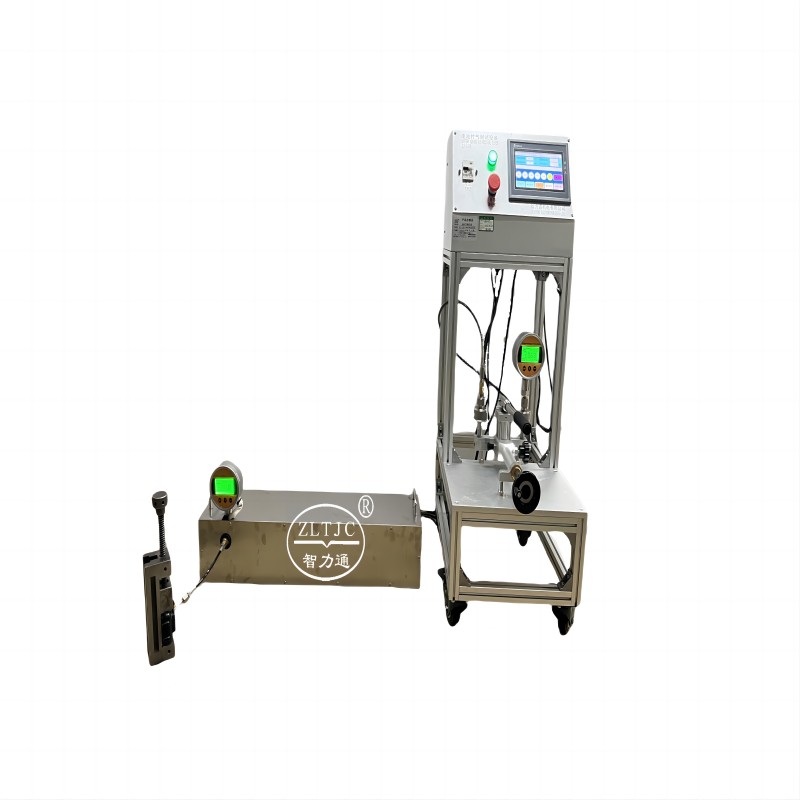Product Overview
The ZLT-CJ8A Chemical Battery Case Pressure Testing System is a high-precision testing equipment designed by ZLTJC to comply with IEC 60335-1:2020 Annex B.20.1—the latest international standard for evaluating the pressure resistance of battery housings in battery-operated appliances. Its core function is to simulate the pressure generated when a metal-ion battery cell vents during failure, ensuring the battery case can withstand this pressure without unintended rupturing (a critical safety measure to prevent fire, explosion, or chemical leakage).
The ZLT-CJ8A uses compressed air as the test medium and features PLC (Programmable Logic Controller) control for precise pressure regulation. Key technical specifications include a pressure range of 0~4 MPa, a steel orifice with a diameter of 2.85±0.05 mm (for controlled air injection), and adjustable air injection volumes (20 ml, 30 ml, 50 ml, 100 ml)—calibrated to match the capacity of metal-ion cells (per IEC 60335-1 Table B.3). The system also includes a manual pressure mode for flexibility and a test time range of 30 seconds (standard) to 0-99999 seconds (customizable).
Manufactured in China, the ZLT-CJ8A has an MOQ of 1 unit, accepts payment via T/T, and offers a lead time of 10 days from order confirmation, with shipments from Guangzhou port. Weighing approximately 60 kg, it is built for stability and long-term use, making it essential for battery manufacturers, appliance brands, and safety labs.
Capacity of the single metal-ion cell with the highest capacity Ah | Volume of air(±10%) ml |
0,2≤Ah˂5 | 20 |
5≤Ah˂25 | 30 |
25≤Ah˂100 | 50 |
Ah≥100 | 100 |
Technical specification:
Power supply: | AC220V50Hz,other voltages on request. |
Control mode: | By PLC |
Pressure mode: | Manual mode |
Pressure range: | 0~4MPa |
Volume of air injected at 2070kPa: | 20ml,30ml,50ml,100ml. |
Diameter of steel orifice: | 2,85±0,05mm. |
Pressurized medium: | Air. |
Test time: | 30 S or 0-99999 s can be set. |
Test equipment weight: | Approximately 60 kgs. |

Product Features
Latest IEC 60335-1:2020 Compliance: Aligns with the 2020 revision of the standard, ensuring tests meet the most up-to-date safety requirements for battery-operated appliances (e.g., smartphones, laptops, electric tools).
Precise PLC Control: PLC technology ensures accurate regulation of pressure (0~4 MPa) and air injection volume (20-100 ml), eliminating human error and ensuring consistent test results.
Customizable Test Parameters: Adjustable test time (30 s to 99999 s) and air injection volumes allow adaptation to different battery capacities (per IEC 60335-1 Table B.3), from small cells (0.2≤Ah<5) to large cells (Ah≥100).
Safety-Focused Design: The system verifies that battery cases drop below 70 kPa within 30 seconds without rupturing—preventing fire, explosion, or chemical leakage in real-world failure scenarios.
Stable & Durable: Weighing 60 kg, the system remains stable during high-pressure tests, while high-quality components (e.g., steel orifice) ensure long-term reliability.
Application
The ZLT-CJ8A Pressure Testing System is critical for industries involved in battery and battery-operated appliance manufacturing. Key applications include:
Battery Manufacturers: Testing metal-ion battery cases (e.g., lithium-ion, nickel-cobalt-aluminum) to ensure they withstand venting pressure during cell failure—complying with IEC 60335-1:2020.
Appliance Brands: Verifying the pressure resistance of integrated battery cases in products such as cordless vacuum cleaners, portable speakers, electric toothbrushes, and laptops—avoiding safety recalls.
Safety Certification Labs (e.g., UL, CSA): Conducting third-party testing for battery-operated appliances seeking global certifications (CE, UL, CCC), as IEC 60335-1:2020 is a mandatory requirement.
R&D Departments: Developing new battery case designs (e.g., lightweight, compact cases) to balance performance and safety—using the ZLT-CJ8A to validate pressure resistance early in the design process.
FAQ
What is the purpose of testing battery case pressure with the ZLT-CJ8A?
The ZLT-CJ8A simulates the pressure generated when a metal-ion battery cell vents during failure (e.g., overcharging, short circuit). It ensures the battery case can withstand this pressure without rupturing—preventing fire, explosion, or the release of toxic chemicals, which are critical safety risks for battery-operated appliances.
How does the ZLT-CJ8A determine if a battery case passes the test?
A battery case passes if: 1) It does not rupture or sustain unintended damage during testing; 2) The overpressure inside the case drops below 70 kPa within 30 seconds after air injection (per IEC 60335-1:2020 Annex B.20.1).
What air injection volume should be used for different battery capacities?
The volume is determined by the capacity of the highest-capacity single metal-ion cell (per IEC 60335-1 Table B.3):
20 ml: For cells with 0.2≤Ah<5
30 ml: For cells with 5≤Ah<25
50 ml: For cells with 25≤Ah<100
100 ml: For cells with Ah≥100





































